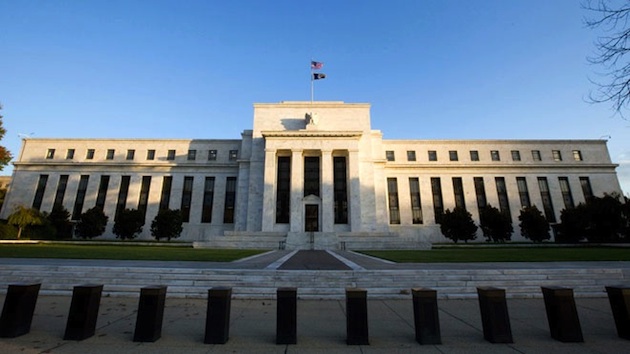

The Federal Reserve (Photo: REUTERS)
Developing: Minutes from the meeting of the Federal Reserve’s policy-making committee in September reveal how central bankers remain cautious regarding the prospect of raising interest rates, ending the massive printing of money and returning to normal, fiscal monetary policy.
Policy-making committee members view the U.S. economy as expanding at a moderate pace in the third quarter, or “somewhat better than expected.” However, the committee members found no consensus on the durability of the labor market, citing the “slack” remaining and the very same concerns outlined in PPD’s coverage of the September jobs report.
The policy-making committee also said it plans to raise its target interest rate sometime next year, but disagreement continued over the timing and trajectory. Inflation “hawks” argue that keeping rates low will invite runaway inflation and lead to asset bubbles.
Though the BLS report showed wages are still far too low, Yellen and others say wage growth must be modest due to the risks of inflationary pressure. When wages rise too quickly it can lead to runaway inflation, which becomes a vicious economic cycle. It will move on corporate profits eventually, and the cost of production thus final sale of goods will increase, quickly eroding the realized gains in Americans’ purchasing power.
Inflation “doves” argue that when rates increase it will increase borrowing costs for consumers, making it more expensive to get a mortgage or a car loan, or for small businesses to get a loan for expansion. On the other hand, hawks point to the fact that these economic events will happen regardless of the Fed’s policy, noting that increased rates will also raise the cost of borrowing for the government, which will soon find itself holding an unsustainable amount of debt if increases are not done slowly while progress is closely scrutinized.
Each worst-case scenario ends up hurting the worker the most, suggesting two positions that are falling woefully short of replacing shady monetary policy with sound regulatory and economic policies that would lead to more broad-based wealth creation.



